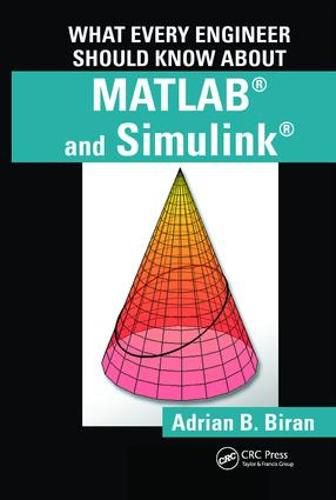Readings Newsletter
Become a Readings Member to make your shopping experience even easier.
Sign in or sign up for free!
You’re not far away from qualifying for FREE standard shipping within Australia
You’ve qualified for FREE standard shipping within Australia
The cart is loading…






MATLAB can be used to execute many mathematical and engineering calculations, as well as a handheld computer can if not better. Moreover, like many other computer languages, it can perform tasks that a handheld computer cannot. Compared to other computer languages, MATLAB provides many built-in functions that make learning easier and reduce prototyping time. Simulink is a toolbox that extends the possibilities of MATLAB by providing a graphical interface for modeling and simulating dynamical processes.
Using examples from mathematics, mechanical and electrical engineering, and control and signal processing, What Every Engineer Should Know About MATLAB and Simulink provides an introduction to these two computer environments and examines the advantages and limitations of MATLAB. It first explores the benefits of how to use MATLAB to solve problems and then process and present calculations and experimental results. This book also briefly introduces the reader to more advanced features of the software, such as object-oriented programming (OOP), and it draws the attention to some specialized toolboxes.
Key features of the book include demonstrations of how to:
Visualize the results of calculations in various kinds of graphical representations
Write useful script files and functions for solving specific problems
Avoid disastrous computational errors
Convert calculations into technical reports and insert calculations and graphs into either MS Word or LaTeX
This book illustrates the limitations of the computer, as well as the implications associated with errors that can result from approximations or numerical errors. Using selected examples of computer-aided errors, the author explains that the set of computer numbers is discrete and bounded a feature that can cause catastrophic errors
$9.00 standard shipping within Australia
FREE standard shipping within Australia for orders over $100.00
Express & International shipping calculated at checkout
MATLAB can be used to execute many mathematical and engineering calculations, as well as a handheld computer can if not better. Moreover, like many other computer languages, it can perform tasks that a handheld computer cannot. Compared to other computer languages, MATLAB provides many built-in functions that make learning easier and reduce prototyping time. Simulink is a toolbox that extends the possibilities of MATLAB by providing a graphical interface for modeling and simulating dynamical processes.
Using examples from mathematics, mechanical and electrical engineering, and control and signal processing, What Every Engineer Should Know About MATLAB and Simulink provides an introduction to these two computer environments and examines the advantages and limitations of MATLAB. It first explores the benefits of how to use MATLAB to solve problems and then process and present calculations and experimental results. This book also briefly introduces the reader to more advanced features of the software, such as object-oriented programming (OOP), and it draws the attention to some specialized toolboxes.
Key features of the book include demonstrations of how to:
Visualize the results of calculations in various kinds of graphical representations
Write useful script files and functions for solving specific problems
Avoid disastrous computational errors
Convert calculations into technical reports and insert calculations and graphs into either MS Word or LaTeX
This book illustrates the limitations of the computer, as well as the implications associated with errors that can result from approximations or numerical errors. Using selected examples of computer-aided errors, the author explains that the set of computer numbers is discrete and bounded a feature that can cause catastrophic errors